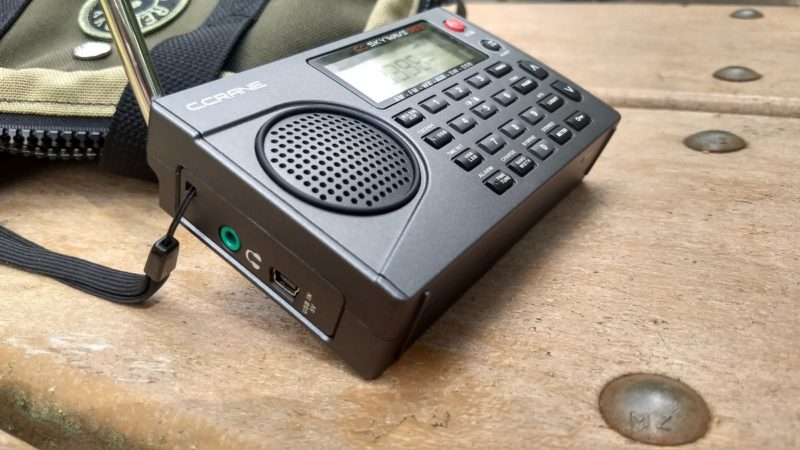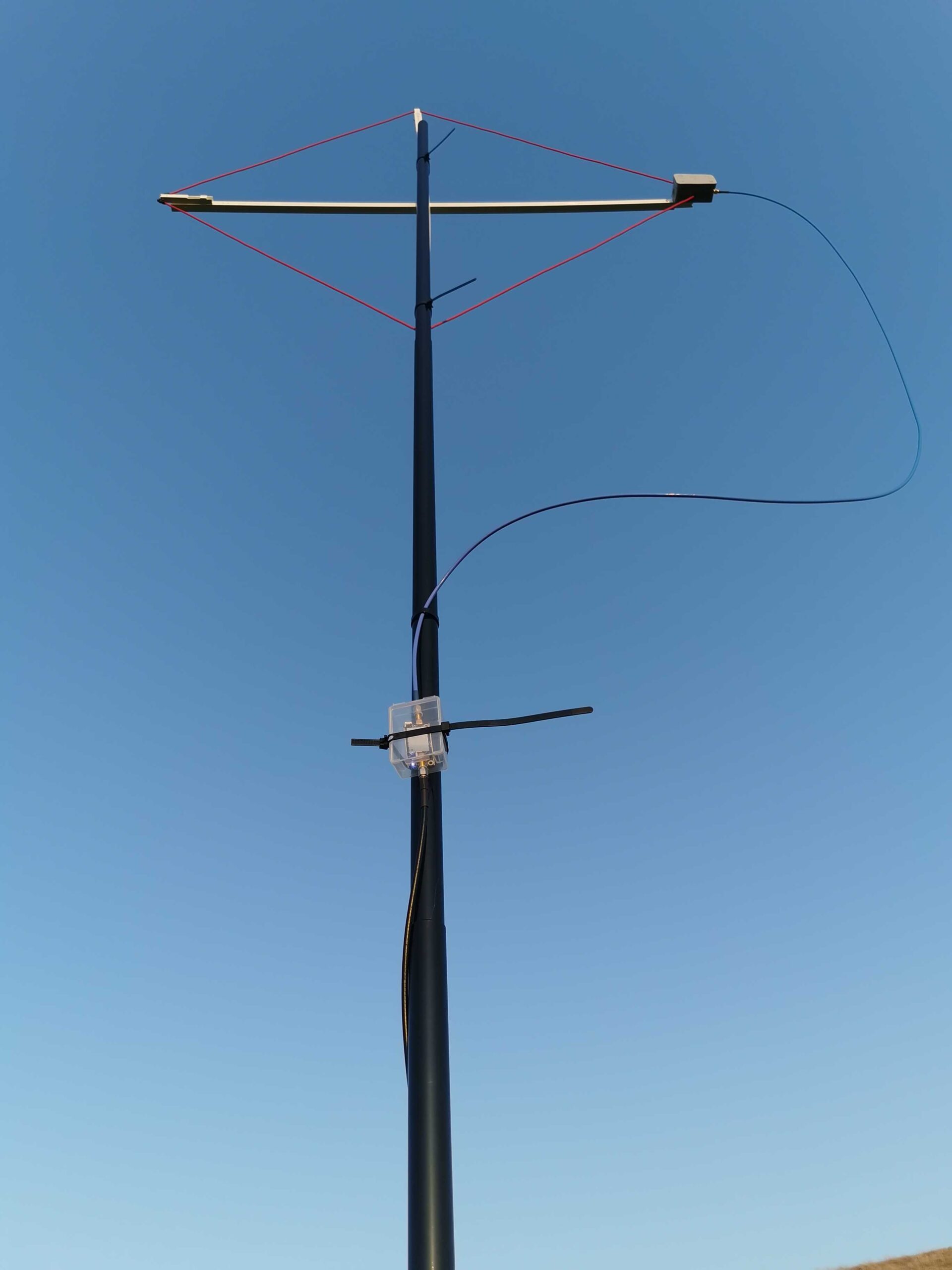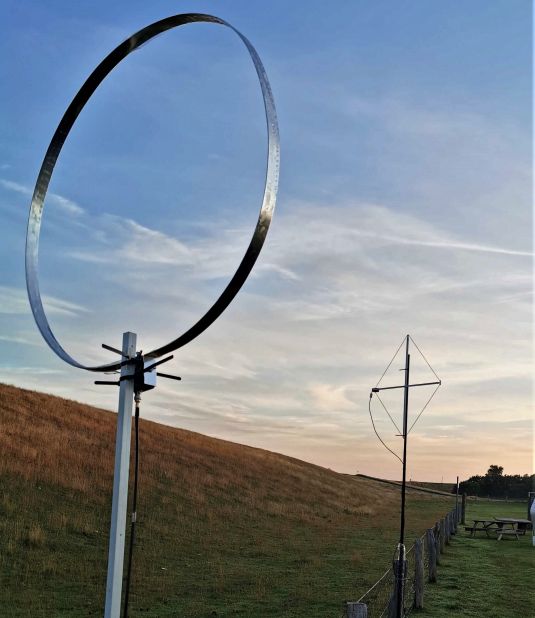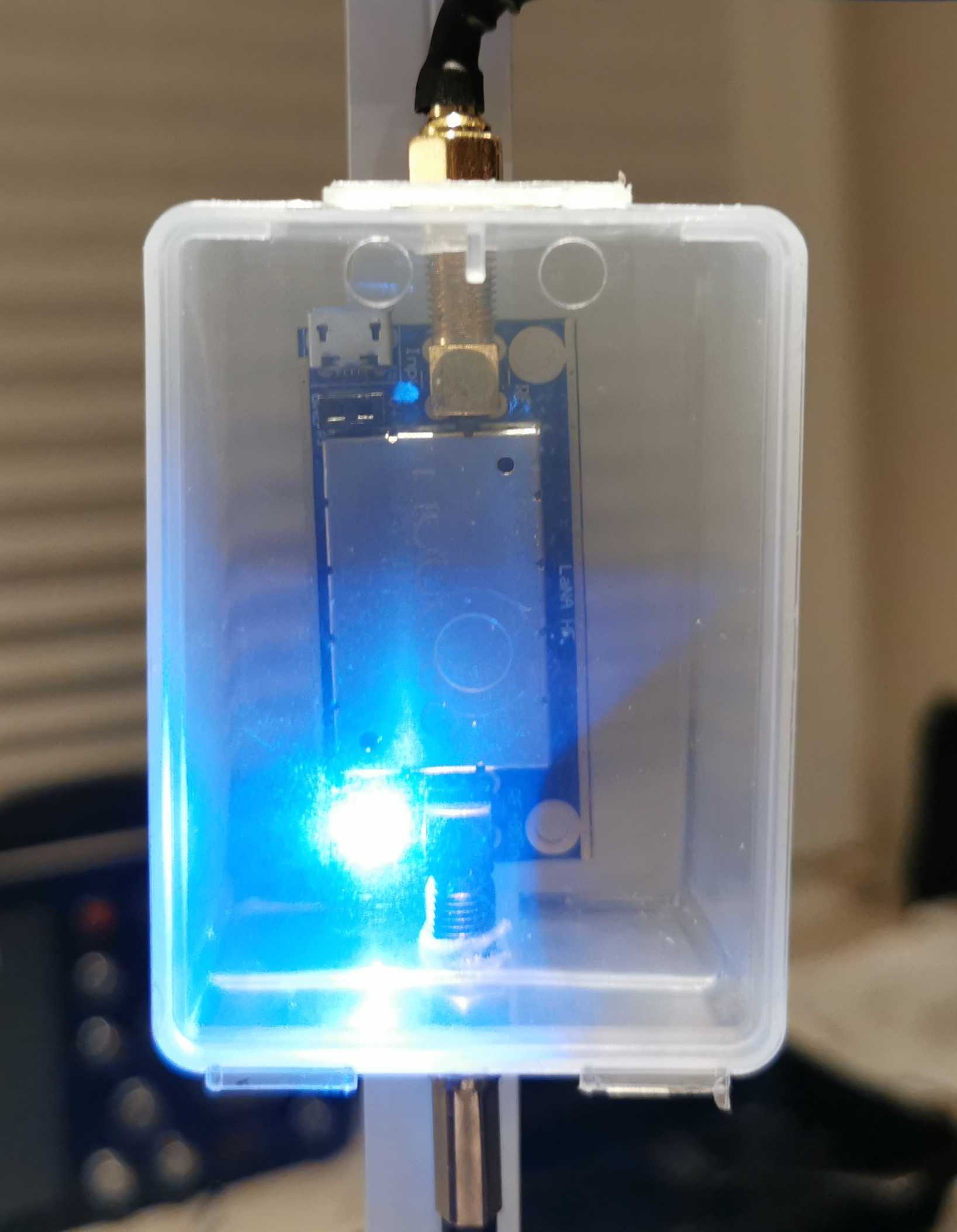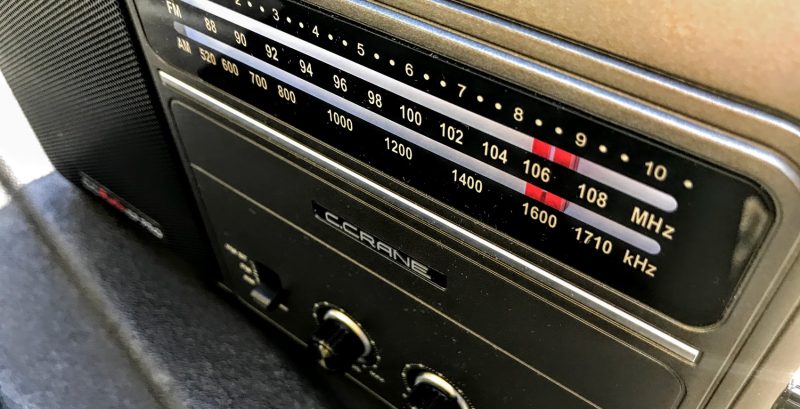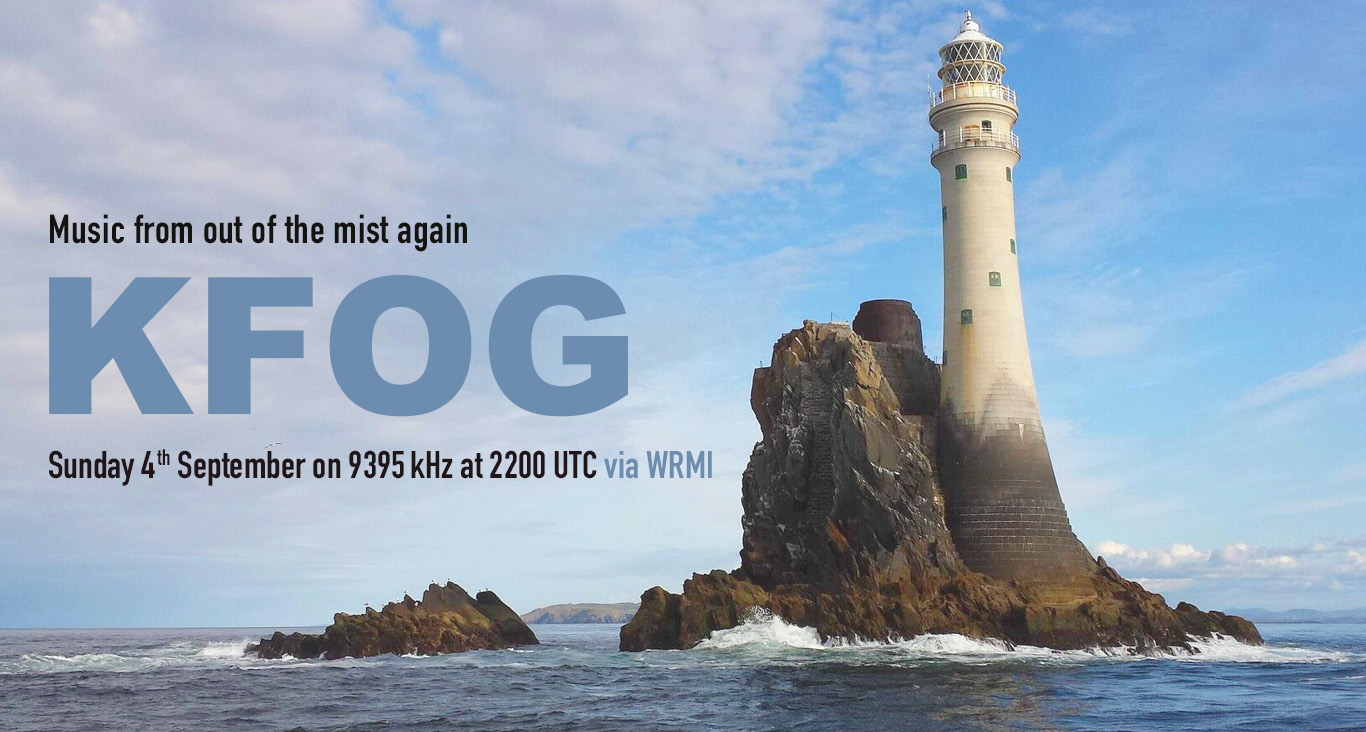 Hi SWLing post community, hope you are all well. This weekend there’s another in the Imaginary Stations series, this time the return of KFOG. The transmission will be on air on 9395 kHz from 2200 utc on Sunday 4th September 2022. Expect tunes in a nautical style. It will feature “music from out of the mist” as they say at KFOG HQ. Fastradioburst23.
Hi SWLing post community, hope you are all well. This weekend there’s another in the Imaginary Stations series, this time the return of KFOG. The transmission will be on air on 9395 kHz from 2200 utc on Sunday 4th September 2022. Expect tunes in a nautical style. It will feature “music from out of the mist” as they say at KFOG HQ. Fastradioburst23.
RNZ Pacific resumes shortwave analogue service to Pacific region
(Source: RNZ via Alokesh Gupta)
RNZ Pacific resumes shortwave analogue service to Pacific region (RNZ)
From September 1, RNZ Pacific will resume its shortwave analogue service to the Pacific region between the hours of 5 and 9am New Zealand time.
Shortwave radio is radio transmission using shortwave (SW) radio frequencies.
RNZ Pacific broadcasts in digital and analogue shortwave to radio stations and individual listeners in the Pacific – the digital service is available via satellite and the analogue shortwave can be accessed by anyone with shortwave radio.
The AM service during the breakfast period was stopped in 2016.
The resumption of the analogue service will allow listeners in remote locations with a domestic shortwave radio to hear RNZ Pacific 24 hours a day, made possible with extra funding from the New Zealand government.
RNZ Pacific will run three different frequencies at various times, at 5am NZT tune in on 7425 kilohertz, at 6am NZT listen on 9700 kilohertz, and at 8am NZT change the dial to 11725.
For our full schedule of shortwave frequencies check out the RNZ Pacific website.
The DRM digital service during breakfast hours will continue on transmitter two for our partner stations around the Pacific region.
RNZ Pacific’s flagship daily current affairs programme Pacific Waves is widely listened to across the region and is also broadcast by the BBC Pacific Service.
Guest commentary: Nothing is so constant as change
Many thanks to SWLing Post contributor, Jerome van der Linden, who shares the following guest post:
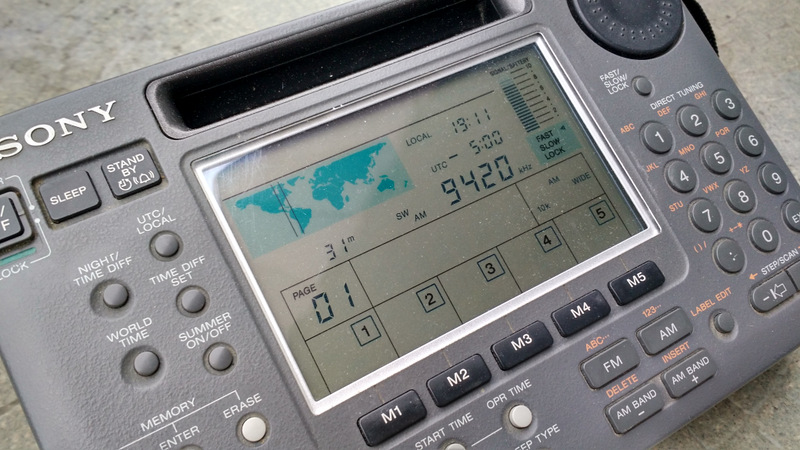 Nothing is so constant as change
Nothing is so constant as change
by Jerome van der Linden
Those of us who have had an interest in broadcasting over many years realize pretty soon that technology is constantly changing. The following relates to the situation where I live in Australia, but I suspect similar things are occurring in other parts of the world, and serve as a constant reminder that we live in a world of change.
When we were in our teens, we had radios that would tune AM and one or more shortwave bands. Hence many of us first heard interstate medium wave stations, and realised that signals there travelled further during darkness hours. Then we switched to SW1 or SW2 and often heard nothing. But persistence paid off and soon we were listening to stations that were in other countries! And when we connected a long wire to the antenna terminal signals improved dramatically. Wasn’t that amazing?
Somewhere in the 70s (I think) our TV stations brought in colour and that too was an amazing change to experience.
Then – somewhat belatedly for us in Australia – FM radio came along and gee the quality of the audio was outstanding! Even my late father was surprised by the clarity with which he could now listen to classical music on our nationwide dedicated ABC Classic FM station. FM also brought with it the introduction of “Community Radio” stations and in more recent years many other types of broadcasters.
Satellite TV came to us in the form of Foxtel: carrying so many different channels it was bewildering. When I realized that the events of 9-11 were telecast live on BBC World (and others), I too decided we should have Foxtel, as I have always been a “news nerd”.
By the late 1990s – having seen a hey day in probably the 60s and 70s – shortwave listening was rapidly becoming a thing of the past, and only hobbyists listened to SW: I remember being asked by another passenger when I was on a South Pacific cruise, what was that I was listening with out on deck? Was it some kind of computer? No, it was just a Sony SW55, and I was listening to Radio Australia.
Then, probably 5 years ago in Australia DAB+ radio was introduced, and whereas we previously had a choice of perhaps 10 to 15 AM & FM radio stations to tune to, suddenly we had a choice of these same stations on DAB radio (in major cities only), PLUS another 10 or 15! We have a phenomenal choice of what to listen to. From a technical view it was amazing to think that all the signals were coming from only one or two transmitters. For those of us with some technical interest it was for a while inconceivable that each station would not have its own transmitter.
Meanwhile, our TV systems have also become digitized in the last couple of years. Not just do we have perhaps three different channels for each commercial network, so 3 commercial networks are now providing probably 9 different programs. On top of that the Government broadcasters (ABC & SBS) have provided not just at least 3 TV channels each, but each of their numerous radio services is now also available on every TV set (eg BBC World Service is available 24/7).
About the same time, with higher internet speeds (ie better data transfers) being available, TV services and radio services are increasingly being streamed into our homes and to our mobile devices, with radio Apps promising they’re “free”, when in fact they do incur a data transfer impact/cost in whatever Internet plan one may have available. Many of the older generation probably don’t even realize what streaming video or sound means, but I think the younger generation is catching on.
Now, to my horror, my favourite DAB music station (“Buddha”) has been making announcements on air saying that the DAB service will be terminated from September 1st, and if I want to continue listening, I must tune in using that Company’s own “LiSTNR” app! Does this mean that listening to what comes over the ether will be a thing of the past? Will we be obliged to pay $x per annum to use a company’s streaming app just to be able to listen to their programs? Whatever is the world coming to?
Our country is, I suspect, very well catered for in terms of media services, and I wonder if we’ve done that too well. I also fear though, that those of us trying to push for reintroduction of shortwave services for remote Northern Territory areas (where streaming apps are a non sense), and for Australia to again broadcast into Pacific territories, may be fighting an uphill battle.
Radio Angela (WBCQ 5130 kHz) Schedule for September 2022
(from Bill Tilford)
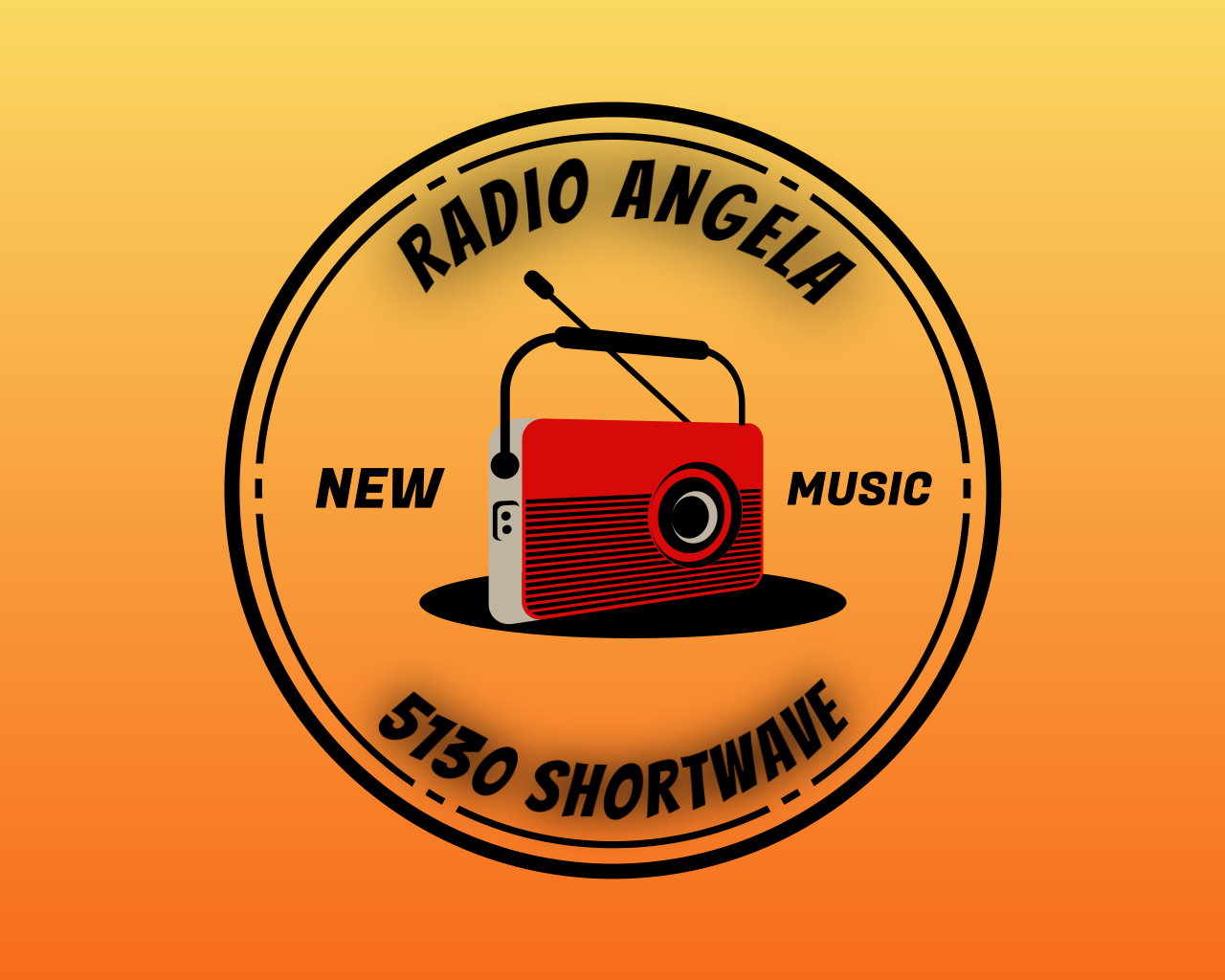
The following is the Radio Angela (WBCQ 5130 kHz) schedule for September 2022. Radio Angela welcomes Austin Saturday Night, a new monthly program by Terry Colgan, who also produces Texas Radio Shortwave on other frequencies/stations, and Venerable Verses with Lainie Petersen on Sunday nights. That program begins with a serialized reading of The Rubaiyat of Omar Khayyam.
Small Unidirectional Loop Antenna (SULA) Part 3: Questions & Answers
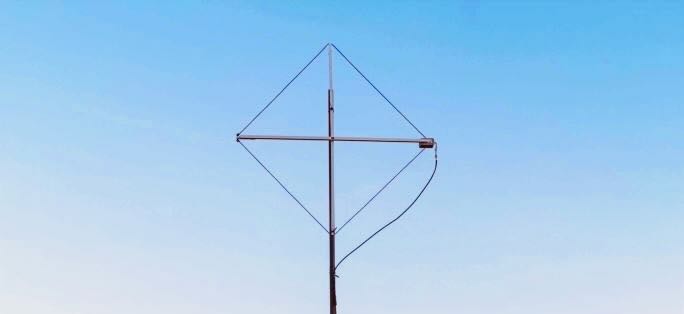 Many thanks to SWLing Post contributor extraordinaire, 13dka, who brings us Part Two of a three part series about the new SULA homebrew antenna project. This first article describes this affordable antenna and demonstrates its unique reception properties. The second article focuses on construction notes. This third and final article will essentially be a Q&A about the SULA antenna.
Many thanks to SWLing Post contributor extraordinaire, 13dka, who brings us Part Two of a three part series about the new SULA homebrew antenna project. This first article describes this affordable antenna and demonstrates its unique reception properties. The second article focuses on construction notes. This third and final article will essentially be a Q&A about the SULA antenna.
This wideband unidirectional antenna is an outstanding and innovative development for the portable DXer. I love the fact that it came to fruition via a collaboration between Grayhat and 13dka: two amazing gents and radio ambassadors on our SWLing.net discussion board and here on the SWLing Post. So many thanks to both of them!
Please enjoy and share Part 3:
Part 3: SULA Q&A
by 13dka
Q: Where can I ask questions, discuss all aspects of the the SULA or collaborate in its further development?
A: There is a thread dedicated to the SULA in the new SWLing.com message board: https://swling.net/viewtopic.php?t=55
Q: Since the antenna is “lossy”, what’s the point of having a “beam”?
A: The answer is once again “SNR”: First off, remember that the LNA is there to make up for most of the losses. Secondly, this is all about the noise pickup, 20dB less gain/more losses outside the main lobe means also a reduction of atmospheric/cosmic/whatnot QRN and of course everything manmade from all these sides. The wide horizontal lobe is more or less one hemisphere horizontally, but the flat-ish vertical pattern makes that only a slice of it. In other words, there will be less QRN and QRM pickup from the back and the top. The idea is that the SNR will ideally increase more than the preamp’s noise figure will cost and it often sounds like this is what actually happens. Of course it’s also nice that you can turn an unwanted signal down using the more or less pronounced notch in the backside pattern up to 21 MHz – also very helpful for direction finding.
Q: Do I need a rotor?
A: It depends. If you are one of the lucky few still having a low-QRM-environment at home and you want to put it in the backyard, you really may want to be able to turn it remotely. If you’re using it portable you can simply rotate the mast manually. If you have local QRM or can’t mount it very far away from your or other houses, you may want to rotate the back of the antenna towards that source, leave it at that position forever and enjoy what’s coming in on the pretty wide main lobe of the antenna. The horizontal lobe covers more or less half of the horizon, depending on your stations of interest and location you could get away with never turning the antenna at all.
Q: Is it better than the XYZ loop?
A: Hey, that’s exactly what I wanted to ask you! 🙂 Even though the SULA is very similar in appearance and performance to a good SML working in ideal (ground conductivity) conditions, the SULA is a pretty different animal with a different behavior: Regular small loops, besides being bidirectional, can lose quite a bit of their low angle sensitivity over “poor” ground while the SULA is supposed to be retaining its properties better over any type of ground. Also, while many SMLs are tuned for VLF through the lower portion of the shortwave, the SULA complements those with quite uniform (good) properties up to 30 MHz and beyond.
Q: I have an end-fed random wire or dipole strung up from the house to a tree etc. – can the SULA beat that?
A: That’s quite possible. To get low takeoff angles from horizontal wire antennas you need to string them up at least 1/2 wavelength high, that’s 20m/66ft on 40/41m, 10m/33ft on 20m and so on. If you can’t do that, the SULA may be your ticket to listen farther beyond the horizon. Also, wire antennas are often strung up to match space restrictions or avoid QRM vectors and that way you may end up with some directionality in directions you don’t want, or no directionality at all when the wire is too low. Another noteworthy point is the ground: For most horizontal antennas, better ground means a considerable higher takeoff angle so the dipole needs even more height for low angles. The SULA’s takeoff angle benefits a little from the better ground and only gets a little worse over poor ground.
Q: Do I really need an LNA?
A: I hope so? Of course it depends… if you are going to try this antenna in a very noisy environment, the LNA may have little to no benefit. The noise is limiting your “radio horizon” to very loud signals anyway and for those you may not need an LNA, ever. On the other hand, the antenna is very lossy and in a quiet environment where noise is not an issue at all, weak signals may drop below the sensitivity threshold of your receiver without the LNA. The less noise you have, the more you’ll be able to benefit from an LNA. You will also need one when your radio isn’t all that sensitive, similar to the requirements to run a YouLoop. Andrew kept the loop impedance as constant as possible in order to allow any low impedance coax preamp to work behind the Balun. Any LNA with 20dB of gain should do, as per usual, better stuff may bring better results.
Among the sparse offers for decent shortwave LNAs, the NooElec LANA HF seems to be the only decent LNA sold via Amazon. It’s comparatively low-cost and unlike the other offers on Amazon, ready to be powered via Bias-T or even via Micro-USB and therefore happy with 5V. Since I also had the balun from the same company I could simply connect that all with a couple of these cute little SMA plumbing bits and it worked. The downside is its unknown but perceivably low resilience against intermodulation (low 3rd-order intercept point), this is usually not a problem with such a small loop but it can be in the presence of nearby transmitters.
If you do have nearby transmitters and don’t mind sourcing an LNA from Europe, Andrew recently pointed me to preamps from here. They offer a moderately priced preamp with a 2N5109 transistor (based on the W7IUV design) for a high IP3 value and low noise, which is also available in PCB-only and fully assembled versions including a compartment. They also offer Bias-T boxes.
Q: What is special/different about this antenna? There are already very similar designs!
A: It’s supposed to be simpler and more compact/portable, and it seems to deliver more consistent results over the entire coverage range in different usage environments than similar designs. The SULA was designed to be made with things that are particularly easy to obtain, or which were already obtained — many of us SWLs have some of that Nooelec stuff in our drawer anyway, even when (or because) we’re not habitual antenna builders and balun winders. Now making a better balun and buying a better preamp is not hard and could even bring better results but the point is that you don’t have to. In summary, this is not meant to be a miracle antenna, just number of compromises re-arranged to create a particularly uncomplicated, small, unidirectional loop antenna that aims for DX, for apartment dwellers and DX nomads like me.
Julian spots a Sony ICF-SW77 on eBay
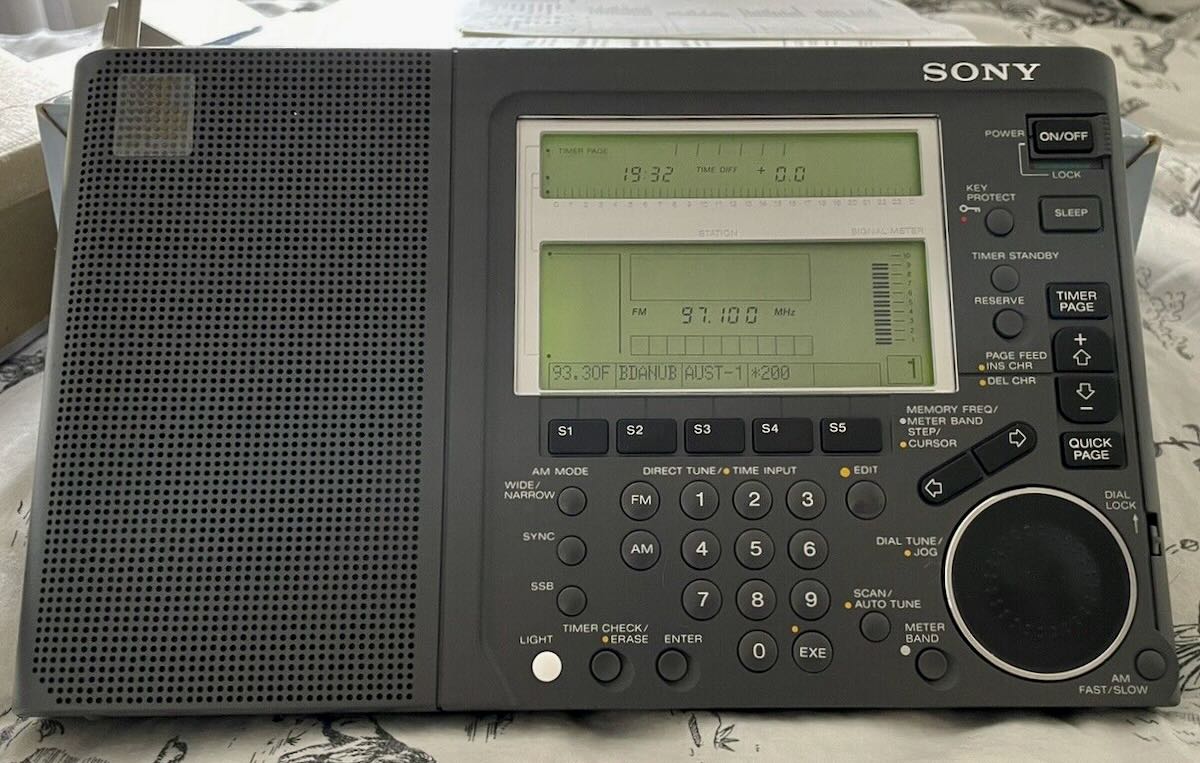 Many thanks to SWLing Post contributor, Julian, who writes:
Many thanks to SWLing Post contributor, Julian, who writes:
Hi Thomas,
I found this eBay listing for a seemingly new in the box Sony ICF SW77 complete with accessories and paperwork. It may interest SWLing readers.
Click here to check it out on eBay.
Best wishes,
Julian
Thank you for the tip, Julian. This does look like a solid unit and in great shape. The seller also has a positive review history which is always a plus. As I always mention with portables of this age, you would need to plan to have it serviced in the future to make sure there are no leaky capacitors or other issues ongoing. I’ll admit I’ve always liked the design of the SW77! That said, 480 EUR is a steep asking price!
Radio Waves: The Gamut All Digital at 4 Years, Glory Days of Pirate Radio, AIR to Kashmir, and Podcast Collaborations
Radio Waves: Stories Making Waves in the World of Radio
Welcome to the SWLing Post’s Radio Waves, a collection of links to interesting stories making waves in the world of radio. Enjoy!
Many thanks to Eric Jon Magnuson for summarizing these news items for Radio Waves!
Hubbard Is Four Years In With All-Digital AM. Here’s How It’s Doing. (Inside Radio)
It has been just over four years since Hubbard Radio’s adult alternative “The Gamut” WWFD, Frederick, MD (820) powered down its analog signal and began operating as a digital-only AM station under experimental authority granted by the FCC. Since then, new FCC rules permitting all-digital AMs industrywide have broadcasters taking a closer look at WWFD as they consider options for struggling AMs.
WWFD posted a 1.5 share (12+) in Nielsen’s Frederick, MD spring survey with a weekly cume of 3,300. Before it went all digital, Dave Kolesar, Senior Broadcast Engineer at Hubbard and the station’s PD, says it was a ratings no-show, “a wasted signal.”
The idea for making the all-digital leap came around Christmas 2016 when Kolesar concluded that a music format on AM – even one as differentiated as The Gamut’s expansive playlist – was “pretty much a nonstarter that exists for the purpose of having an FM translator. In all-digital mode, the AM signal has the capability of becoming relevant again” with digital sound quality, and artist and album title and album artwork displays.
According to Xperi, about 35% of cars on the road in the DC market are equipped with HD Radio receivers. Yet only a small fraction of listening to radio in the market is to AM radio. The station focuses on the one-third of the market that could enjoy a music format that looks and feels like any other service in the dashboard. The strategy involves using the FM translator as promotional vehicle for the digital AM frequency: “when you’re outside the coverage area of our 94.3 FM signal, tune into 820 and hear us while you’re driving around,” Kolesar explains. [Continue reading…]
OPINION: Remembering the glory days of pirate radio 55 years on (Eastern Daily Press)
Radio DJ Tom Edwards looks back at his youth spent broadcasting off the East Anglia coast
Although I’ve lived in Lincolnshire for nearly 30 years having been born and educated in Norwich, I will of course always be a Norfolk man. At 77 years of age now I’ve been a broadcaster for 57 of those years.
During Easter of 1964 a somewhat mysterious radio station came on the airwaves playing non-stop music and the presenters seemed to be just ad libbing at the microphone in contrast to the rather staid BBC light programme which hardly played any popular music. The station turned out to be the now famous Radio Caroline, which was transmitting from a ship off the East Anglia coast.
I was a Bluecoat at Pontins holiday camp at Pakefield and the site had a Radio Pontins Tannoy system so I asked the boss for some money to buy some 45 hit singles which he agreed to and so started doing record requests for the happy campers.
Other stations, whether they were ships or wartime fortresses, suddenly began to appear right around the coast of the UK. Apart from Caroline there were other stations including Radio London, Radio England, Radio270 and Radio 390.
The more I heard of these stations, which were becoming so popular with an estimated audience of 22 million, the more I wanted to be out there at sea with them. I wrote and sent tapes of my Pontins shows to all of them. While on a few days off in Norwich, a man called Reg Calvert called me and said he liked what he heard and offered me a weekend try out on Radio City. [Continue reading…]
AIR’s Station At 9,000 Feet Along LoC In Kashmir Broadcasts Programs For People Living Across Border (India Times)
Surrounded by the barbed wires, dense deodar trees and Pir Panchal mountains in the backdrop, this is the All India Radio (AIR) Srinagar’s Radio Station which has been set up close to the Line of Control (LoC) in Rustum area of J&K’s Uri sector.
Set up in November 2020, the station has been built 9,000 feet above the sea level.
The radio station has been set up with an aim to provide access to the Kashmiri people living on the other side of the border to listen to their favourite programs.
“The local news, music programs and especially Pahari and Gojari programs are aired from this station for the Kashmiri population living on the other side of the LoC,” said Qazi Masood who heads the station in Uri. [Continue reading…]
Podcast Collaborations: The positives, the pitfalls, and the public interest (Public Media Alliance)
Three top public media podcast executives discuss with PMA the benefits and complications that come with collaborations, and how ultimately, they can help public media organisations fulfil their public service obligations.
As the podcast market globally becomes ever more saturated and competitive, PMA invited three top podcast executives from three leading public media organisations to discuss how collaborations might provide the pathway for public media organisations to remain the premier podcast producers. It came after a talk about podcast collaborations at Radiodays Europe in Malmö, Sweden in May 2022.
They spoke to PMA’s Editorial Manager, Harry Lock.
Harry Lock: Could you give me some examples of podcasts which you’ve worked on where you collaborated with another organisation? How does it actually work logistics-wise?
Arif Noorani, Director of CBC Podcasts: Hunting Warhead is a collaboration we did with VG, Scandinavia’s biggest newspaper, on a story they’d spent more than two years on (it was nominated for a Prix Italia.) Production wise – CBC led the podcast and embedded a VG team member in the production team providing contacts, research and notes on scripts.
We have three international co-productions with the BBC World Service – launching in the next year. It’s an equal joint effort – Jon Manel, commissioner for the BBC World Service and I co-lead all aspects of the project. We think the combined heft of CBC Podcasts and the BBC World Service was attractive. We meet weekly and more (along with Whatsapping each other if it’s urgent) to discuss production, content, rollout and all the business side of things. We have one point person between the production teams and the BBC/CBC to keep it streamlined. To make this work, you have to have lots of trust between all sides, and a shared vision of the type of content you want to make (in this case journalistically-driven serialised narrative storytelling rich in characters and heartbeat). Jon and I have informally collaborated for a few years so that really helped. We’ll also combine our audience building, digital and marketing efforts in the launch and rollout.
Andrew Davies, Digital and Engagement Editor, ABC Australia: Co-productions and collaborations with external organisations/partners is still a relatively new area for the ABC in podcasting. There have been a number of collaborations between Radio National (ABC’s specialist talks network) and the BBC but those have mostly been radio focused. The ABC’s Audio Studios team did a co-production with WNYC Studios a few years ago with Short & Curly, our very popular ethics podcast for children.
More recently we’ve worked with Arif and the CBC Podcasts team around the release of series two of our popular Stuff The British Stole podcast. That involved the CBC team helping with audience building (through cross-promotion, publicity, marketing and digital/social content) in the North American market. That was a really successful collaboration and we were excited to work with the CBC as we knew they recognised not just what a great show it is but also wanted to help it reach a bigger audience. There were a large number of people involved from both broader teams but I want to echo Arif’s point about having clear point people on both sides to keep things streamlined.
Tim Watkin, Executive Producer of Podcasts & Series, RNZ: RNZ Podcasts has produced 46 podcasts in partnership with 38 different organisations. That includes other broadcasters and media, production houses and funders. Collaboration can take many forms.
The most common form of collaboration for RNZ is where we make a podcast alongside an independent production company. For example, Eating Fried Chicken in the Shower is a series that was pitched to us by an independent producer, Charlie Bleakley, and host James Nokise. RNZ paid for the series but was very hands-on, more than a mere commission. We provided a supervising producer, sound recordist on location, draft audio edits, studios for the final mix and promotion. [Continue reading…]
Do you enjoy the SWLing Post?
Please consider supporting us via Patreon or our Coffee Fund!
Your support makes articles like this one possible. Thank you!

